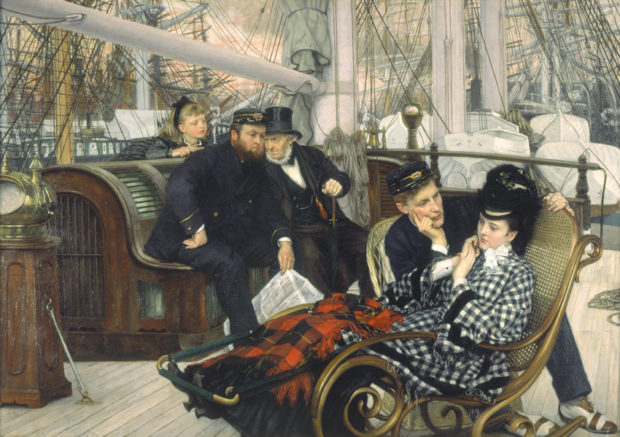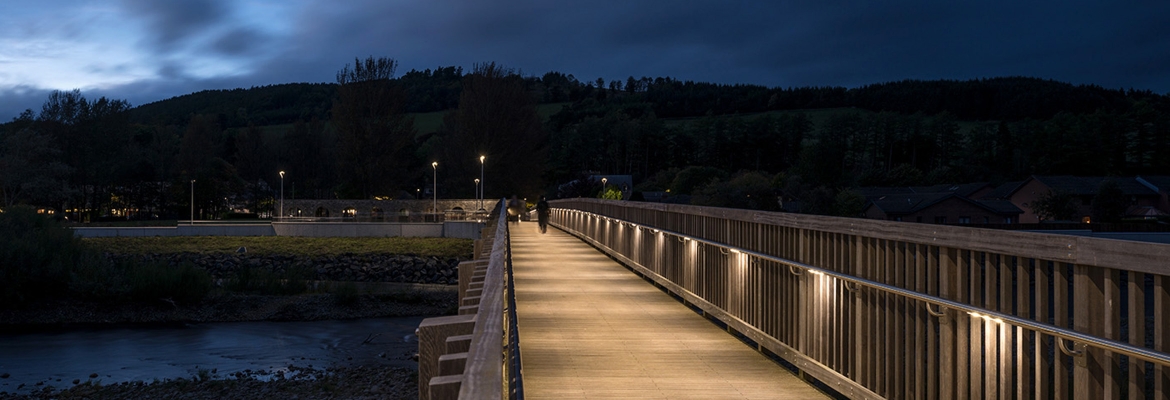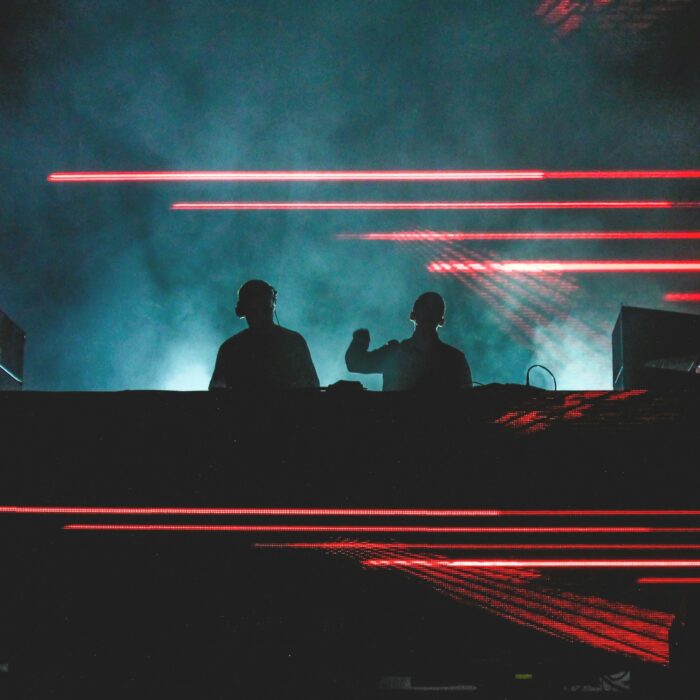You have no items in your cart. Want to get some nice things?
Go shopping
The curator in the pink dress is fielding my halting questions with aplomb. We have stopped in front of a medium-sized oil painting of a scene on board ship. It is a tangle of unnameable emotions and undefined relationships: a woman in a bath chair, perhaps an invalid, gazes into the middle distance as a sailor wearing a wedding ring addresses her from slightly behind and to the side, his arm curled around her chair in a manner that feels distinctly Mephistophelean. On a deckside bench nearby, another sailor—older and bearded—holds a newspaper, which he’s not reading, between his knees and looks disgruntled. His seat companion, an elderly gentleman with a top hat and watch chain, glances behind him with irritation at something out of view. Meanwhile, a little girl with a black velvet hair ribbon leans over the back of the bench: perhaps trying to read the newspaper that’s held out of her reach, perhaps importuning the elderly man (a grandfather? A guardian?). Behind them all, the riggings of this ship and a dozen others criss-cross the sky in whip-like lines of black paint. It is unspeakably claustrophobic. The curator is telling me that these lines are a direct allusion to the telegraph cables that had been placed under the Atlantic less than a decade before this painting was made, in 1873, by James Tissot. It is all about communication that cannot be decoded, glances that can’t be explained, eyelines that don’t line up. Everyone in this painting is trying to say something without saying it directly, and mostly, they are failing.
I ask her whether Tissot would have referred to telegraphy on purpose; her connection of the rigging lines with telegraph cables is ingenious but strikes me as a little tidy.
She is wary of using the word “zeitgeist”, but she ventures that the cultural climate of the 1860s and ‘70s was full of interest about precisely the issues—transmission, decoding, distance, resistance—that the widespread use of the telegraph embodied. Issues in our own day that artists and writers seem to have permanently lodged in their sub-conscious, she suggests, include privacy, surveillance, privilege.
It occurs to me that the way this exhibition is being presented taps into those interests and issues unashamedly: its name is Victorians Decoded, invoking the influence of technology on previous historical periods in language framed by our current fascination with technology in the form of computer programming. The exhibition catalogue isn’t all paintings. They surround artifacts including code books from telegraph and railway companies, and domestic cipher books by Charles Wheatstone, who made contributions to the development of telegraphy as a professional engineer at King’s College London.
(Herewith, a note: The exhibition texts don’t distinguish between encoding and encrypting, which is a shame, as they’re easy to confuse and fundamentally different. Encoding literally changes the message that you are sending, whereas encryption is merely a way of concealing your meaning without changing it. The police telegraph code book, for instance, used semi-random words to abbreviate the messages that coppers had to send; a plaque tells us that “FELONY FENCEFUL FETLOCK” decodes as “the subject has two teeth out in front, a slightly turned out nose, and is a smooth talker”. FELONY and FETLOCK aren’t encryptions of the actual words “subject is missing two teeth” and “subject has a turned out nose”; they’re literally different words that are understood to stand for those concepts. Encryptions, on the other hand, are direct translations into a different “language” of the text you want to send; they’re not always helpful for abbreviation.)
There is something really charming about the professional code books, particularly the ones used by the railways. Code words like “Skylark”, “Slug” and “Olive” indicate that Victorian industry remained connected to the land in ways we might not expect. Signalmen, after all, whether changing the points of a rail line or transmitting electric signals via telegraph, spent most of their time in observation boxes in the middle of the countryside.
The exhibition is divided into three rooms, each covering one or two general concepts: “distance”, “transmission”, “coding” and “resistance”. Distance and resistance are vaguer, more abstract ideas, especially as interpreted by paintings; it’s easy to see how the samples of transatlantic cable and the report from the Illustrated London News are relevant, but the paintings of ships at sea are less immediately obvious. The connection, it turns out, is in technique: distance was rendered more realistic and three-dimensional in this era by the addition of painstaking detail even to minute objects in the background, so that the ocean on which these painted ships sail is white-capped as far as the horizon. Whether you think this is a strong connection or not is probably down to your personality; I found it a fresh and interesting way of forcing visitors to the exhibition to look at an idea from the points of view of multiple different disciplines, though I suppose it could equally be seen as strained.
Still, the “resistance” room, although small, is fascinating for its particular juxtaposition of art and artifact: a Wheatstone bridge, designed to test the resistance of different lengths of telegraph wire to electrical currents, is displayed next to a series of paintings depicting landscapes that seem to be actively resisting the conquering actions of man. John Linnell’s The Timber Wagons (1872) is especially subtle with its message; the men cutting and loading felled trees are dwarfed by a rugged landscape of hills and sky, and clouds threaten. It is a reminder of the pushback against technology in every age: not only the opinion held by some humans that progress is against the laws of god and man, but also the intractability of wilderness landscapes. In this same room, a painting by Edwin Landseer posits the final fate of Ernest Shackleton’s polar expedition: crushed by ice, gnawed by bears.
But the painting most expressive of this weird collision between progress and tradition that characterizes the era is hung on the far corner of the wall that explores the idea of transmission. It is by William Logsdail, painted between 1888 and 1890, and entitled The Ninth of November. It depicts the Lord Mayor’s procession, an annual event in the City of London, passing before the Royal Exchange. This was the shortest such procession of the nineteenth century; it had been scaled down in accordance with the financial difficulties that were besetting the nation at the time. The proportions are strange: the Lord Mayor’s carriage and attendants appear to be processing out of the frame in the foreground; a boy in his early teens, dressed in ceremonial garb, stares inscrutably into the viewer’s eyes. Their audience is a crowd of everyday folk who look both wildly incongruous in this exalted environment and much more grounded in reality; if the Lord Mayor’s procession has the air of a Pre-Raphaelite retold fairytale about it, the onlookers have the jolting lifelikeness of a photograph. There are a few bobbies holding the crowd back, an old woman with loaves in a basket, girls in hats of which they’re obviously very proud, little boys climbing lampposts for a better view, older men with beards and moustaches and a squint. A woman holds her young daughter to prevent her from running into the street. Another little girl is hoisted on an unseen person’s shoulders. Their faces and clothing are all absolutely distinct. The message is stark: this is England now. The ancient traditions of pomp and circumstance and vast sums of public money spent on extravagances are fading. “The picture’s theme is the effort to maintain transmission,” a plaque tells me.
What this painting shows us is that such an effort has always been tricky; that advances in communication often result in a discarding of the past as inefficient, or embarrassing, or just plain wrong; and also that the nineteenth century was not nearly as far removed from the twenty-first as we might like to think. Victorians Decoded is by far the most thought-provoking exhibition I’ve been to in London, and could only possibly be improved by allowing visitors to use the Wheatstone bridge and galvanometer themselves (though I suspect this was considered too hazardous to even contemplate). It’s well worth your time.
Victorians Decoded: Art and Telegraphy is at the Guildhall Art Gallery from September 20 2016-Jan 22 2017. Entry is free.

About Eleanor Franzen
Eleanor Franzén is a London-based writer and editorial assistant. She blogs about books at Elle Thinks (https://www.ellethinks.wordpress.com).





One comment